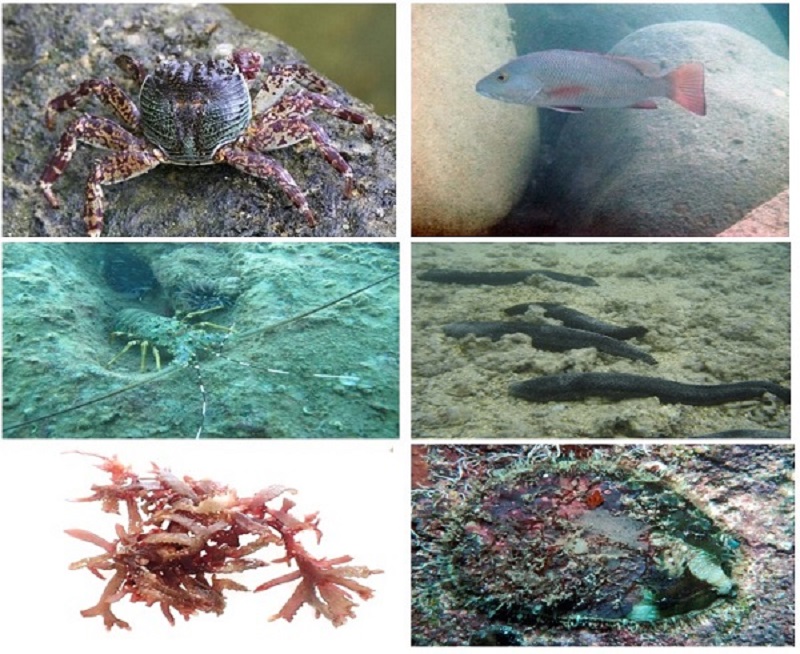New discoveries on biodiversity at the tidal flats of Hai Van - Son Cha reef
New research published in May 2025 has provided important data on biodiversity and aquatic resources at the Hai Van - Son Cha tidal reef, Thua Thien Hue province.

Some economically valuable species commonly found in the tidal reef areas of the study area. Photo: VAST
This area is about 1,500 hectares wide, including ecosystems, such as reefs, seagrass beds and tidal flats, which are home to more than 312 species of organisms, including seaweed, benthos, fish, mollusks and crustaceans, many of which have high economic value, such as lobsters, abalone, groupers, and rabbitfish. These species play an important role in maintaining aquatic resources, regenerating biological resources for fishing grounds and maintaining the stability of tropical marine ecosystems.
The research results also built an Atlas of 77 typical species and a biodiversity zoning diagram based on the diversity index and distribution map of rare and economically valuable species in the region. Scientists published eight scientific articles, in particular the discovery of the application of artificial intelligence (AI) to classify fish species based on ear bone morphology index, opening up a new approach in ecological and ichthyological research in Vietnam.
Although this area is currently facing great pressure from fishing, climate change and serious environmental pollution, especially the environmental incident 2016 caused by industrial waste from Formosa, these new research results contribute to raising awareness and scientific basis for the conservation, restoration and sustainable development of marine resources, contributing to maintaining the ecology and developing the local economy in the future.